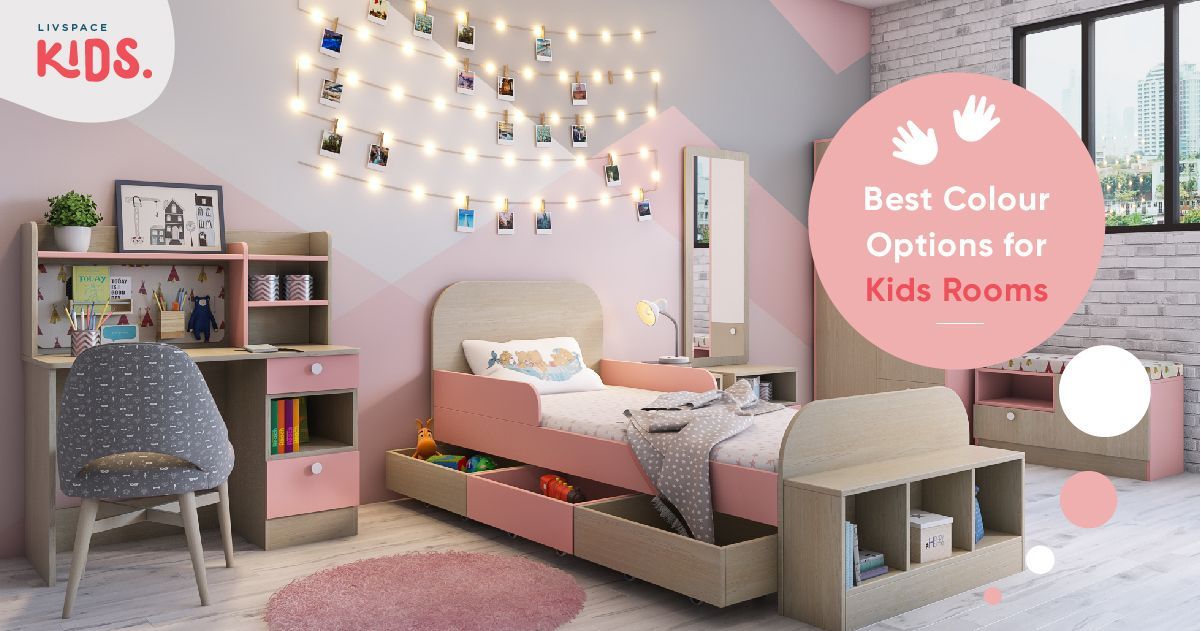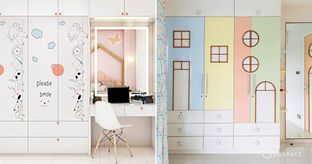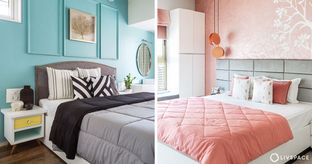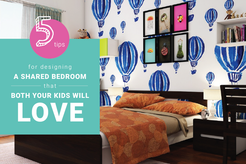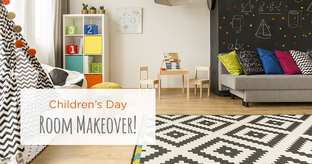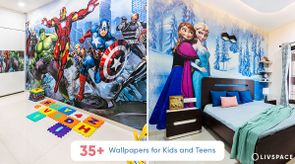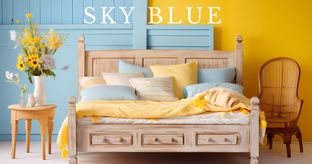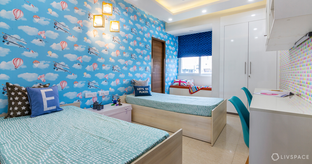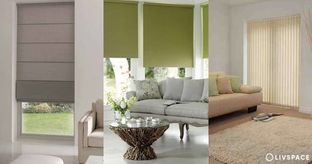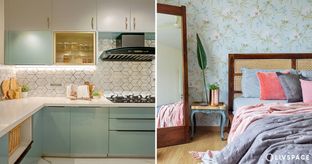Colours have the power to motivate, agitate, calm, please, even increase the appetite. Sounds strange? It’s true– the psychology of colours shows how profound an effect something as ordinary as the colour of your accent wall can have. With children, it’s even more effective as kids are naturally more sensitive and receptive to colours at an early age.
How do children’s bedroom colours affect their state of mind?
Certain colours tend to invoke specific emotions and the science of colours has been leveraged quite frequently over time. When picking out the perfect children’s bedroom colours, it’s crucial to evaluate how the seemingly harmless colour might affect them in their day to day lives and behaviour. Fretting parents, take note– the theory of colours t can also be a handy trick to increase focus or engagement in your child!
Here are a few children’s bedroom colours that are regularly picked as the shade of choice by parents along with an insight into how it affects a child’s state of mind:
Children’s Bedroom Colours #1: Pink
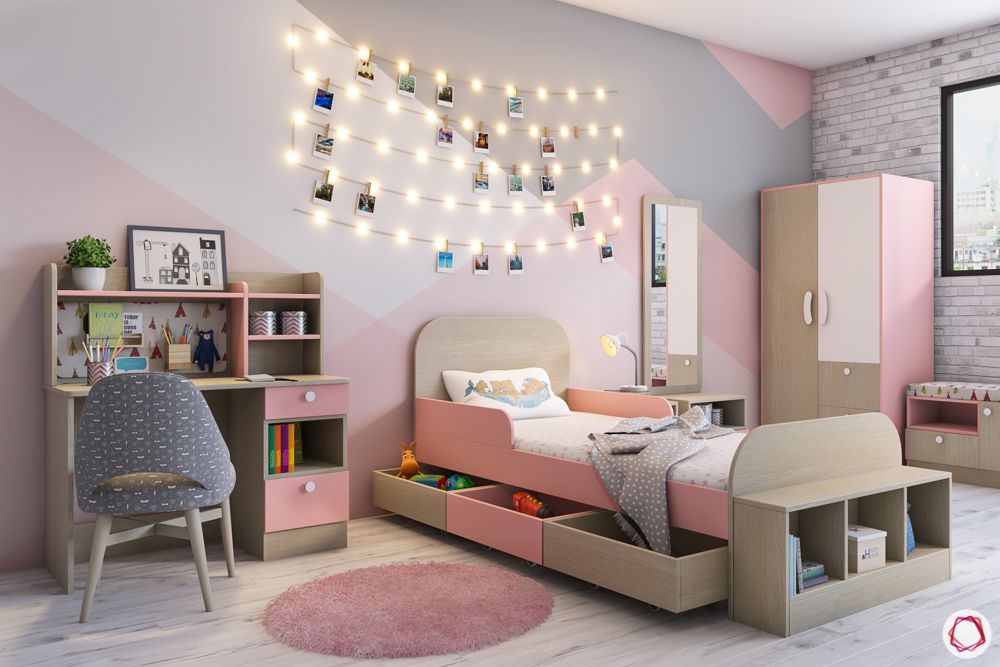
Although this colour is stereotypically associated with girls’ bedrooms, pink is one of the few children’s bedroom colours that is calming, regardless of gender. It encourages and stimulates feelings of empathy– but that doesn’t double up as a license to go overboard. When used in overabundance, pink can cause headaches or discomfort over time. The easiest way to balance this out while reaping the benefits of the colour is to either paint it on one wall or allow smatterings of it around the room in the form of accent pieces or soft furnishings.
Children’s Bedroom Colours #2: Green
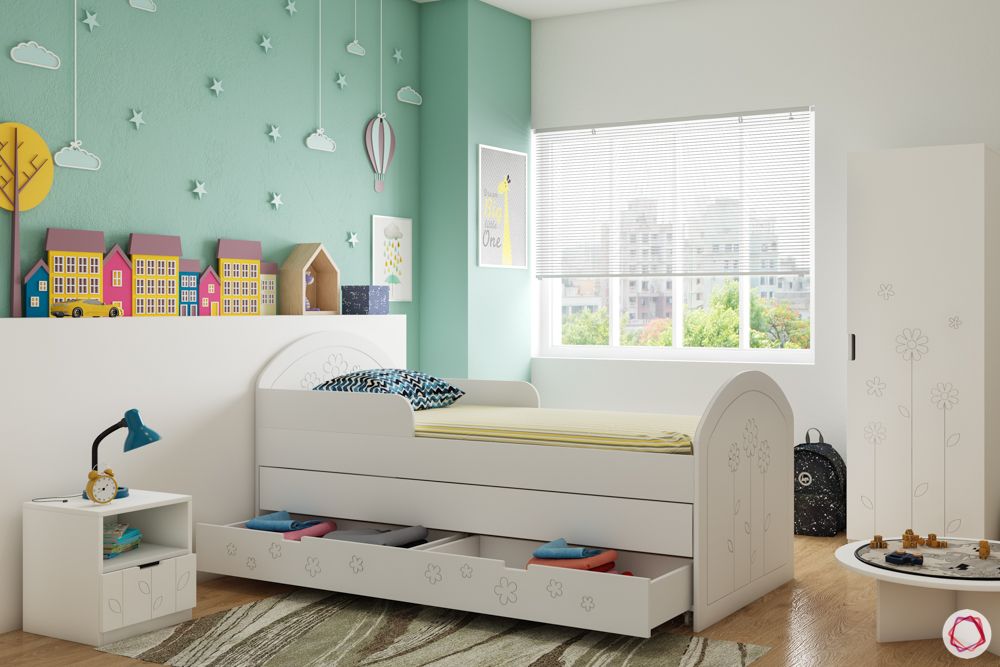
You’ve probably seen this colour in use in paediatric clinics, and for good reason– green is one of the more soothing children’s bedroom colours. Because it invokes the colours of nature and lush environments, it’s calming and pleasing to the eye. In fact, some studies hold that green increases reading and comprehension skills. This makes it a colour of choice for kids rooms which have dedicated study areas. Avoid the eye-watering neons and gloomy dark greens– opt instead for mint green or pastel green to create a soothing space.

Children’s Bedroom Colours #3: Blue
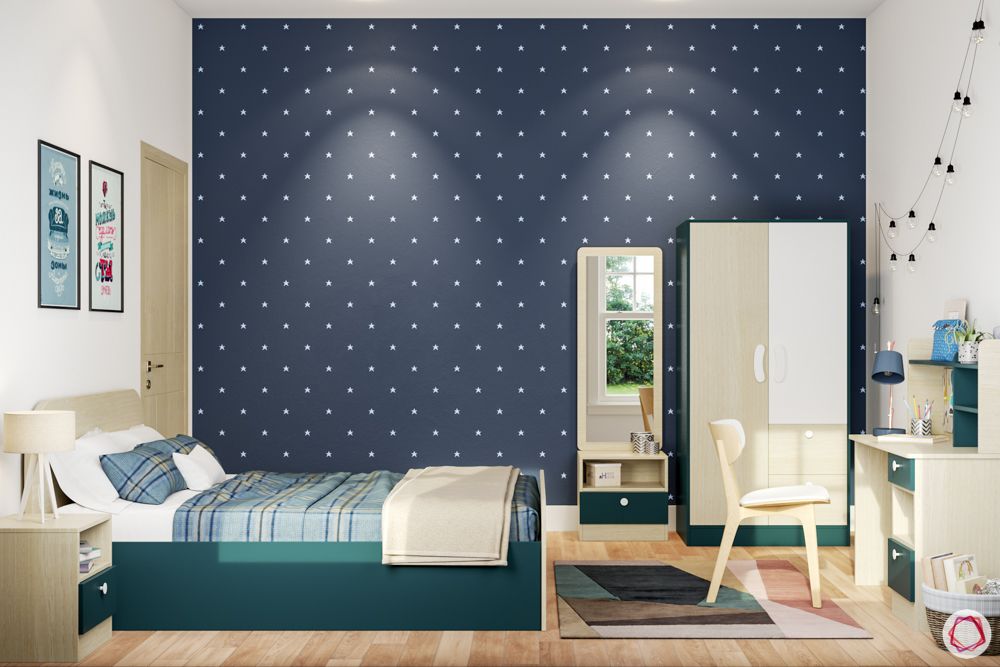
This colour is known to reduce feelings of anxiety and turmoil– ideal for kids who are just settling into their new rooms. It’s one of the more calming colours that has a positive effect on children prone to behavioural problems or tantrums. To balance out the cool tones, add splashes of cheery yellow or sober white; alternatively, add blue elements to a neutral kids room to channel the effects the right way.
Children’s Bedroom Colours #4: White

This peaceful colour makes for a calming room for a sensitive young one. White is one of those rare colours that will not make your child feel overly energetic or lethargic. Moreover, it reinforces the need for cleanliness early in life – it’s harder to keep a white room messy! In addition, white has the advantage of making a room seem larger than it actually is!
However, if white walls seem too boring to you, you can jazz it up with stickers or stencils in your child’s favourite colours!
Pro Tip: Pay attention to the tones of the colours too, as they can impact your child’s state of mind. Warm colours create a sense of cosiness and intimacy while cool colours can make compact spaces seem airier. To be safe and strike a balance while narrowing down on bedroom colours, match cool tones for the same number of warm tones.
Use the psychology behind popular children’s bedroom colours to create a cheery welcoming space for your child to grow in.
Want to know more about ways to design your child’s bedroom? Check this out: Safety Checklist for Your Kids’ Room.
Send in your comments and suggestions.

